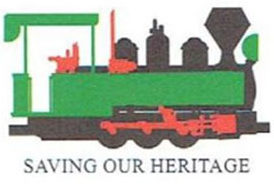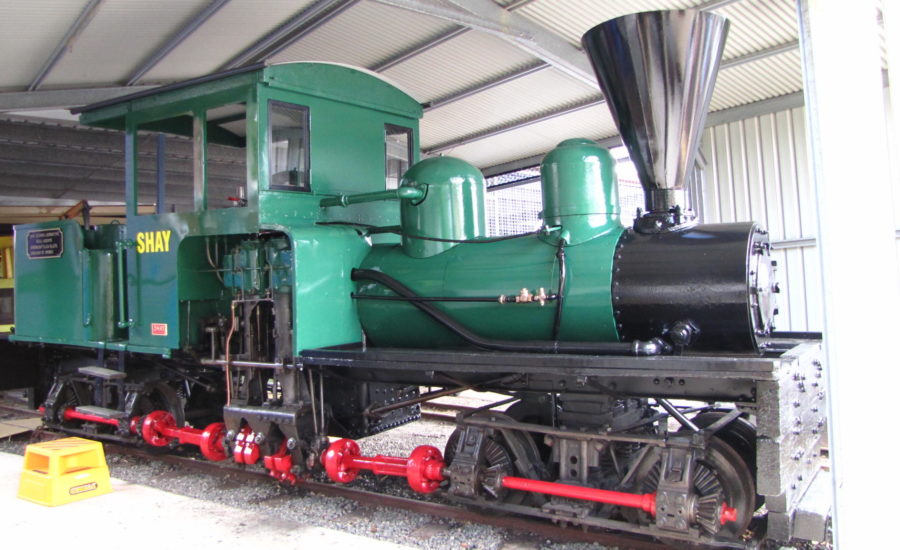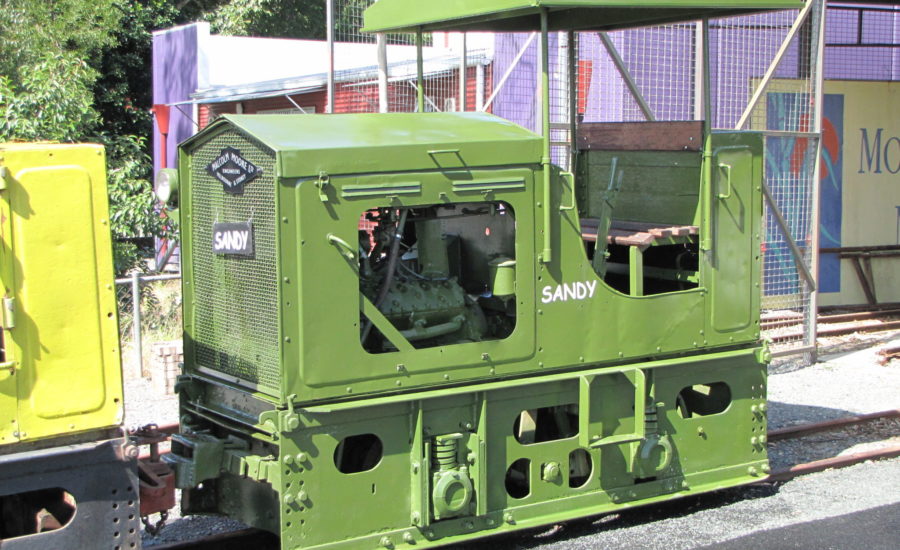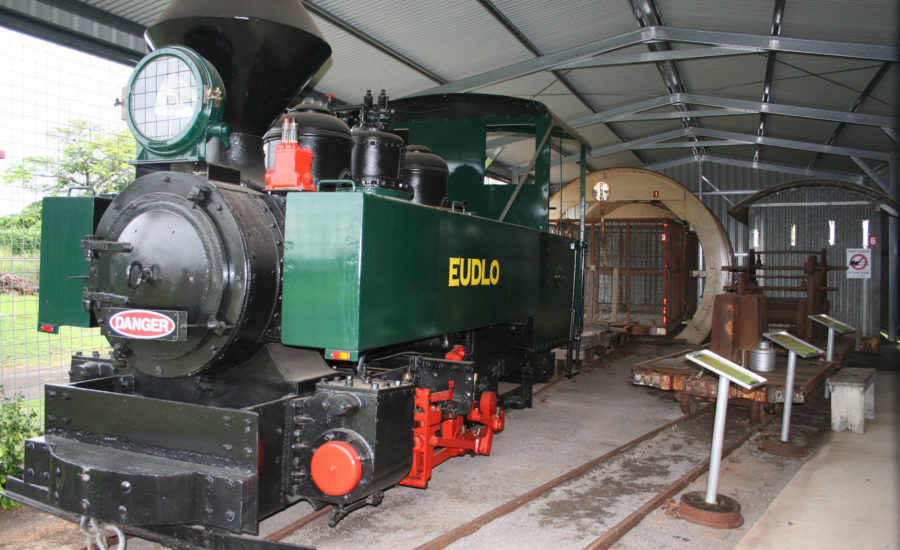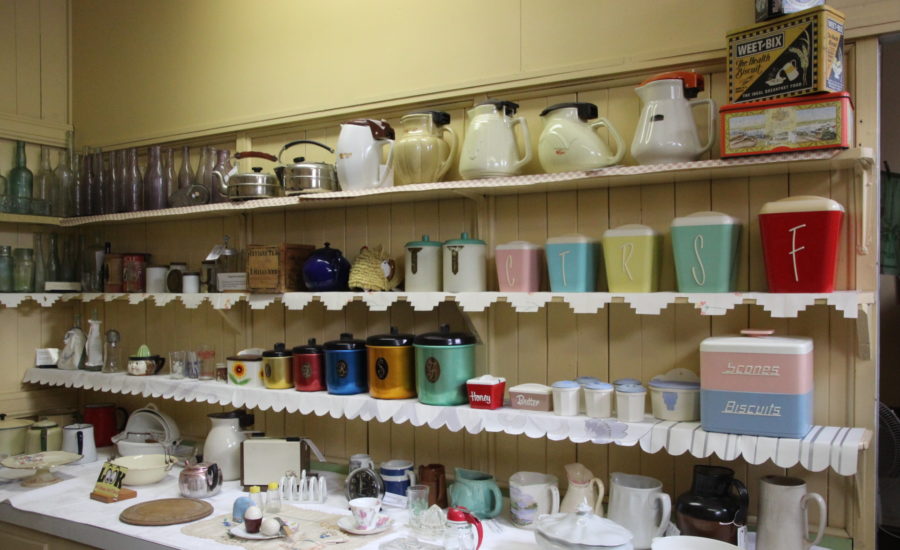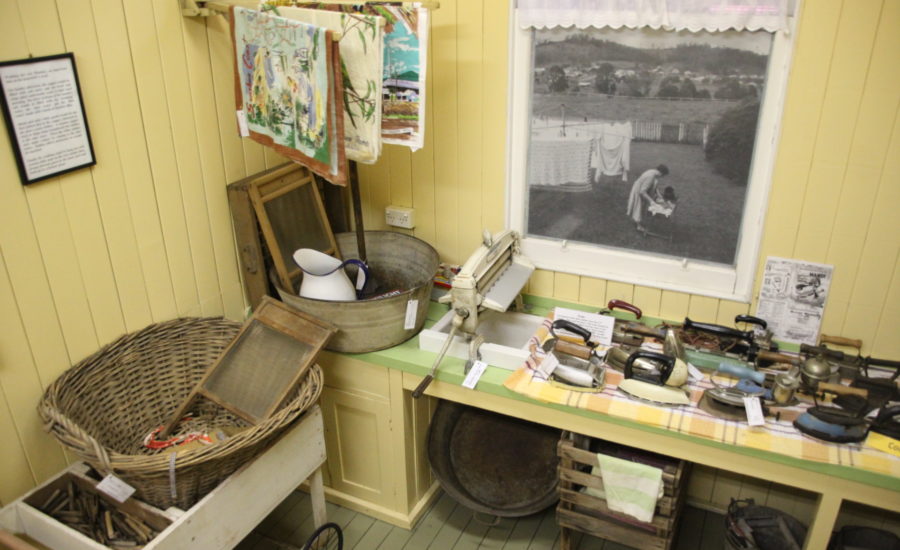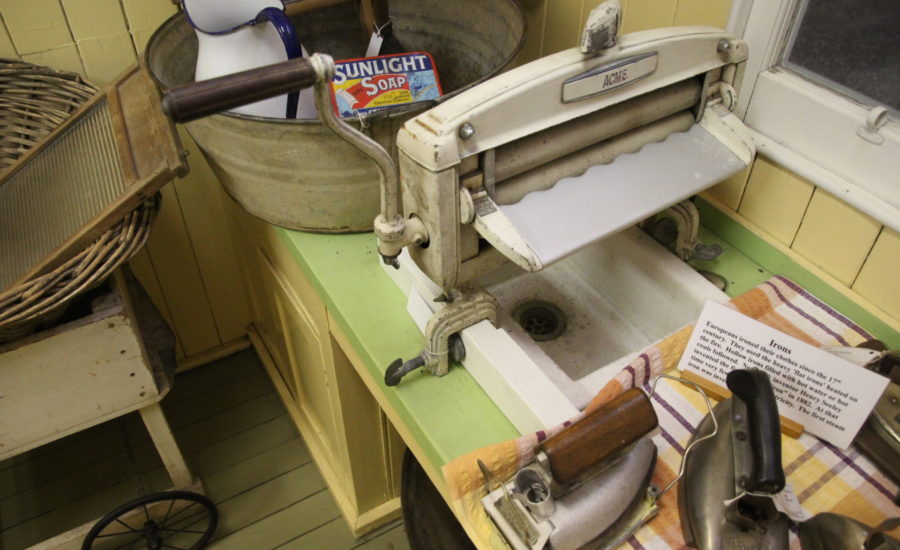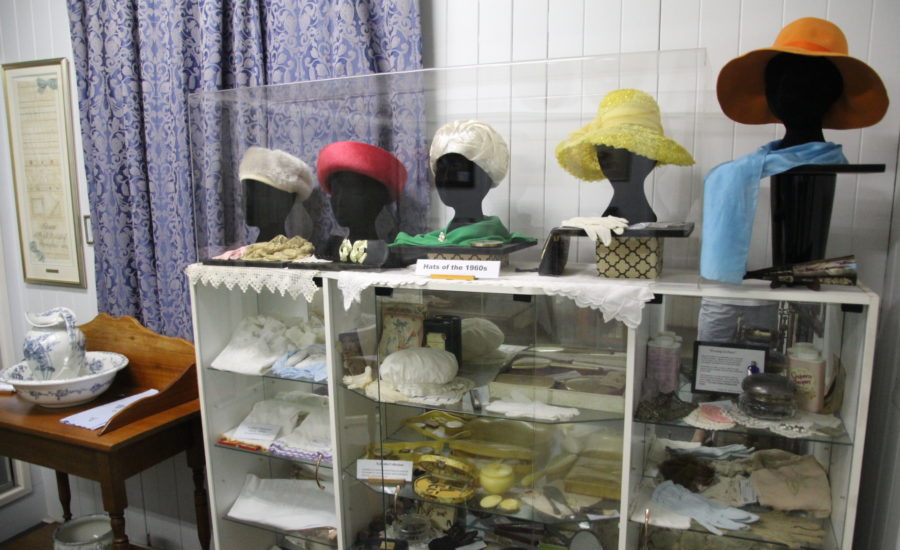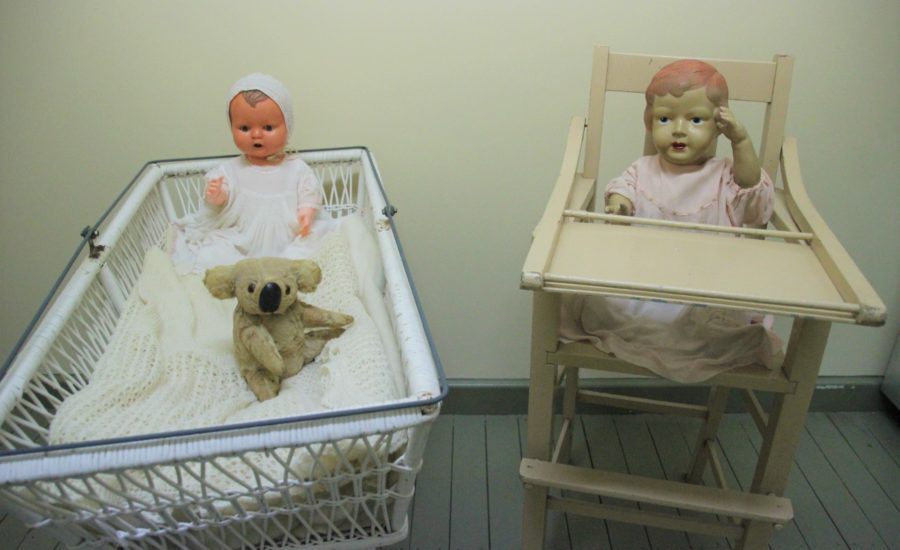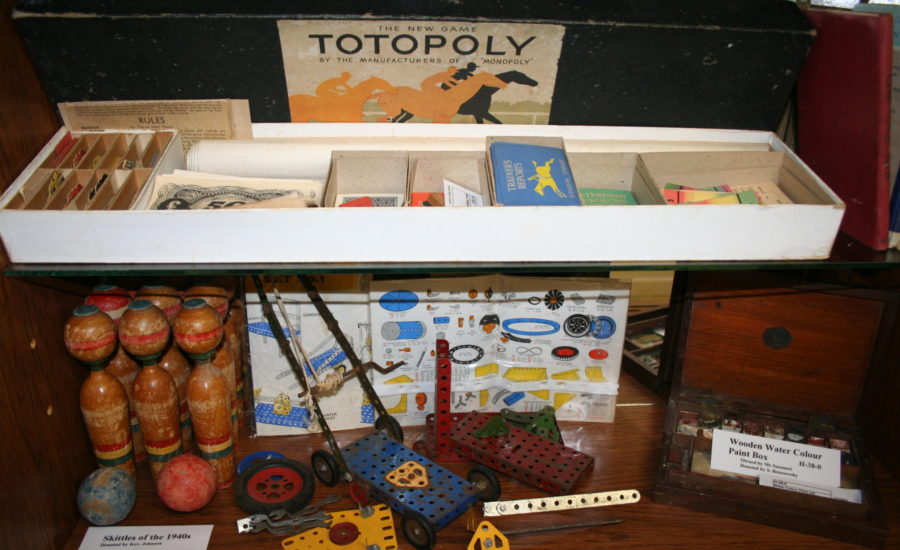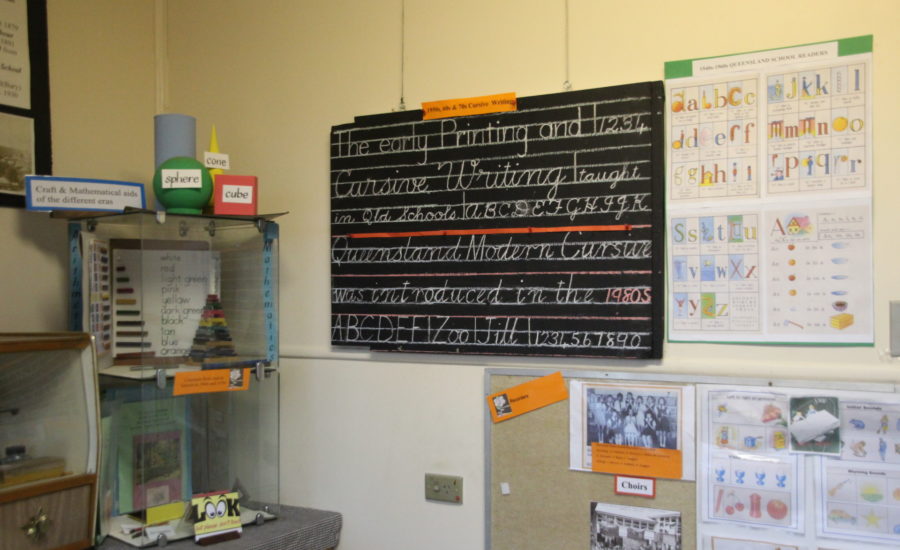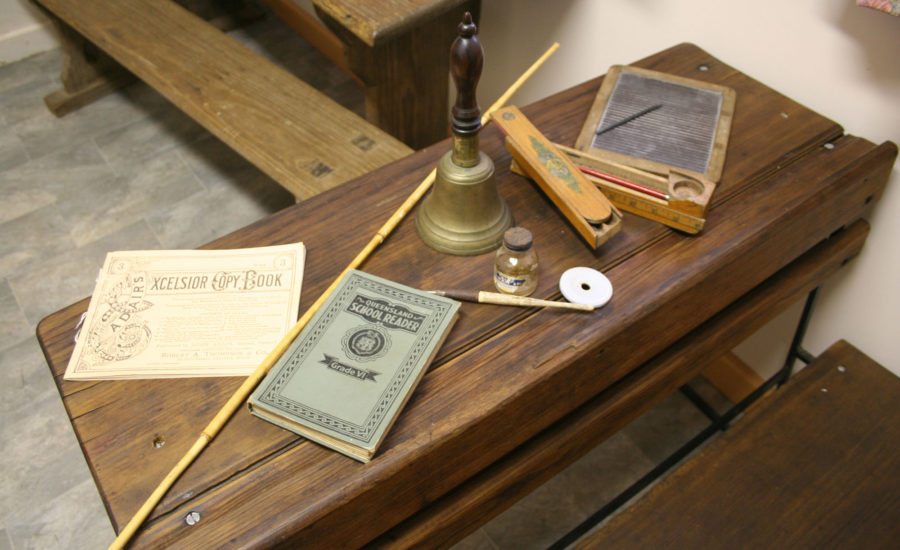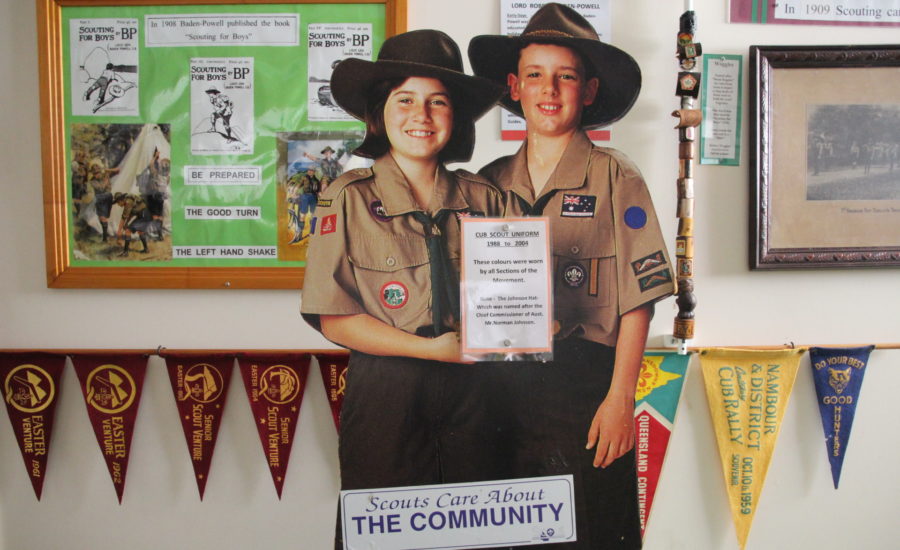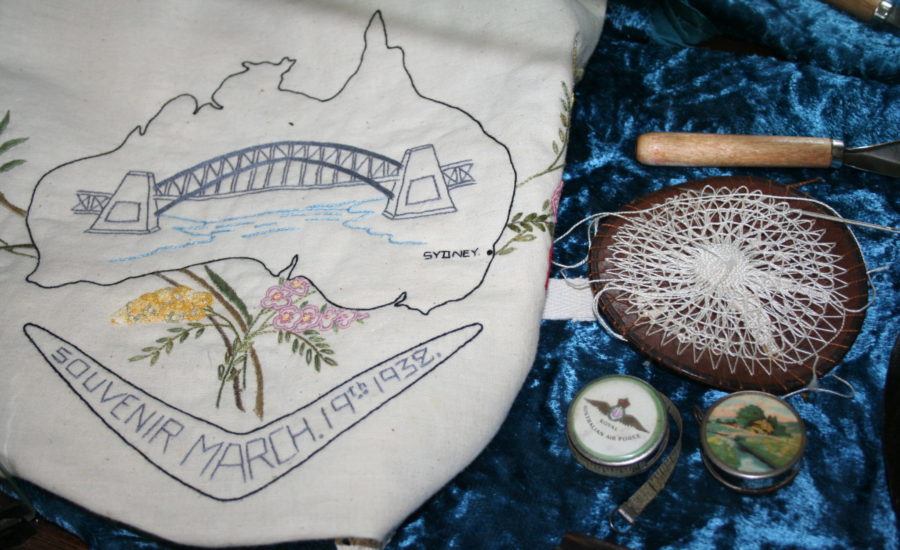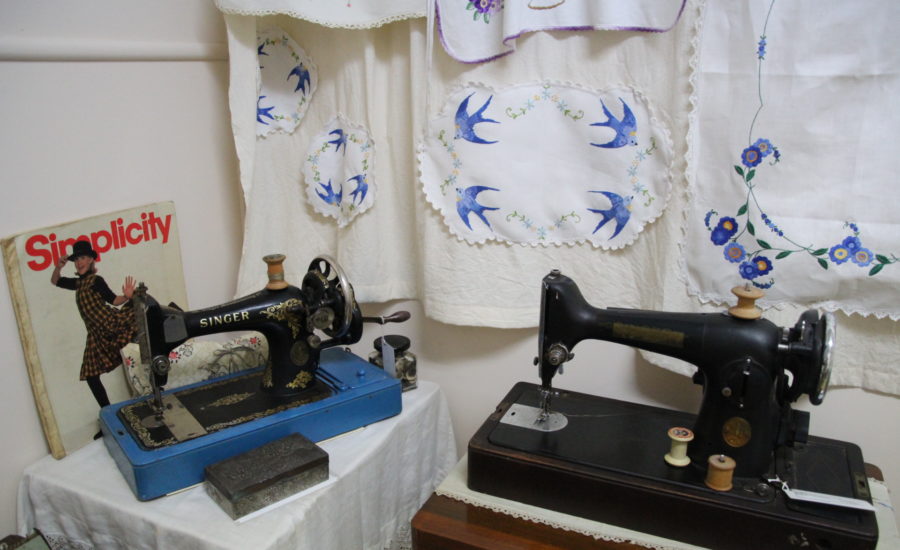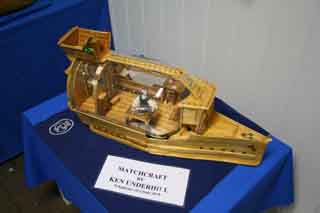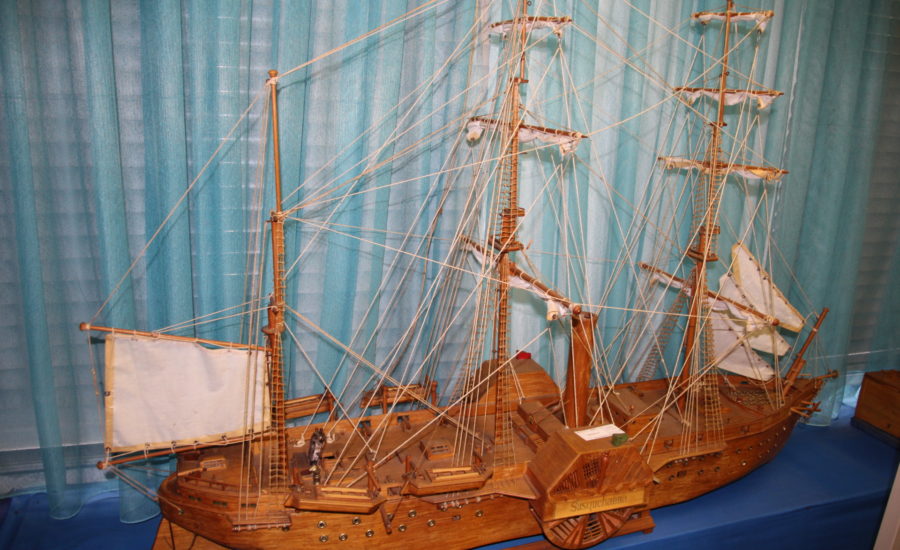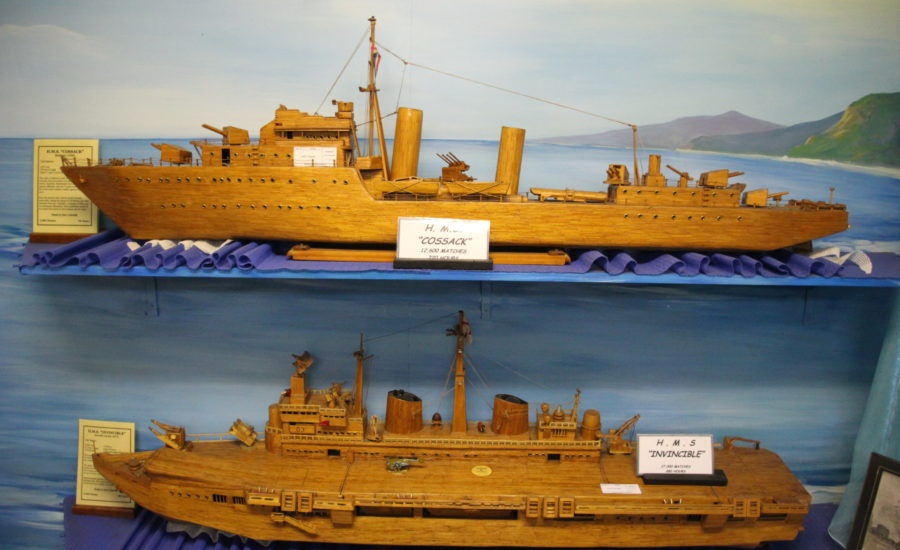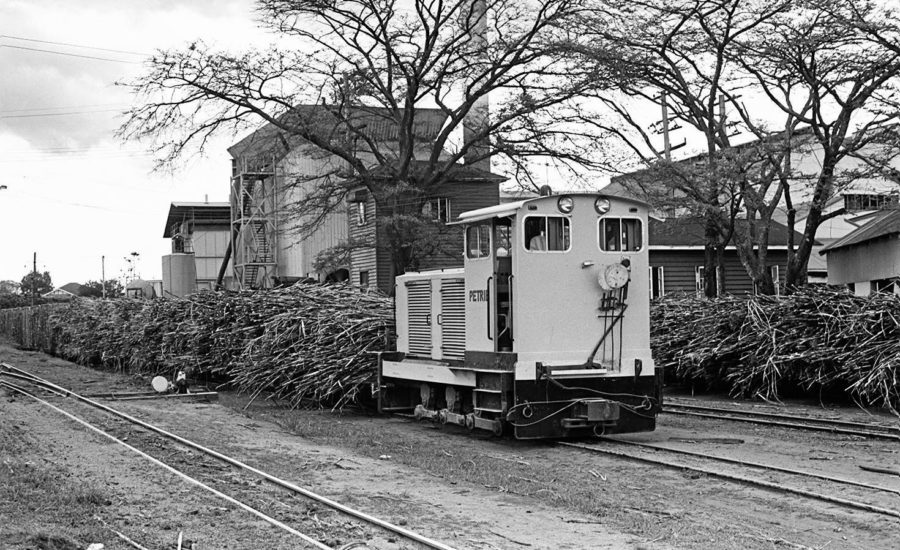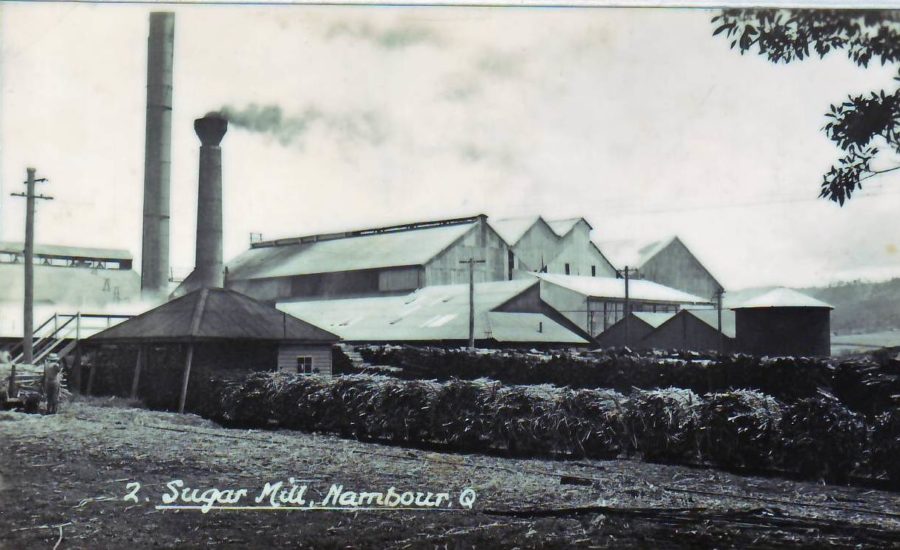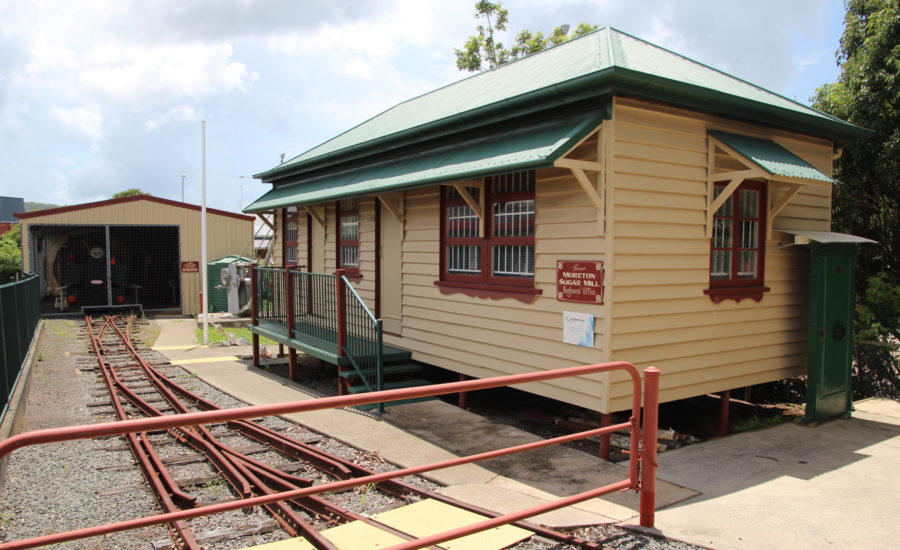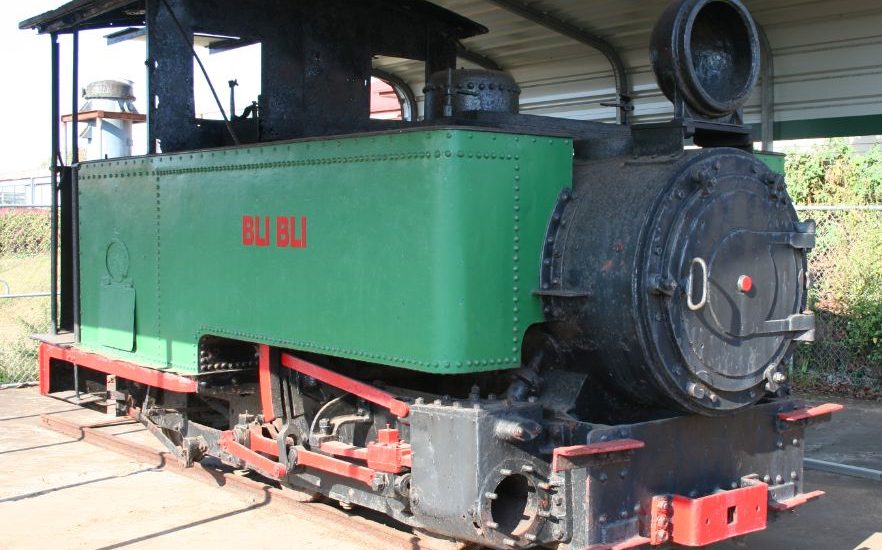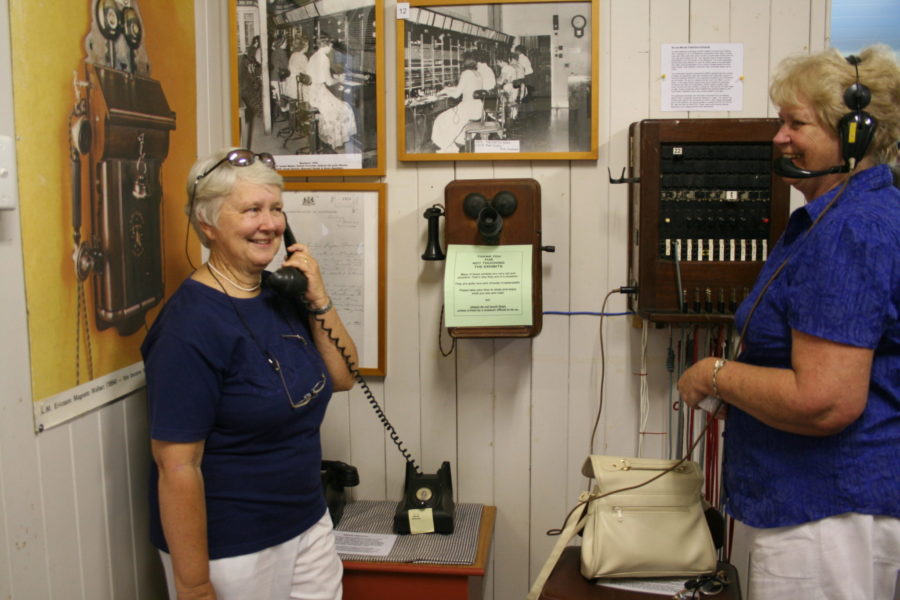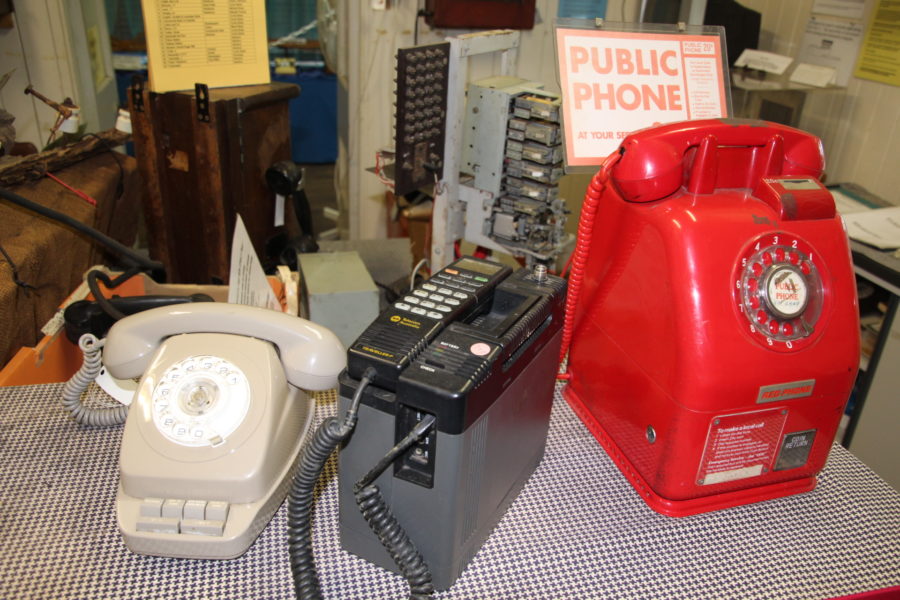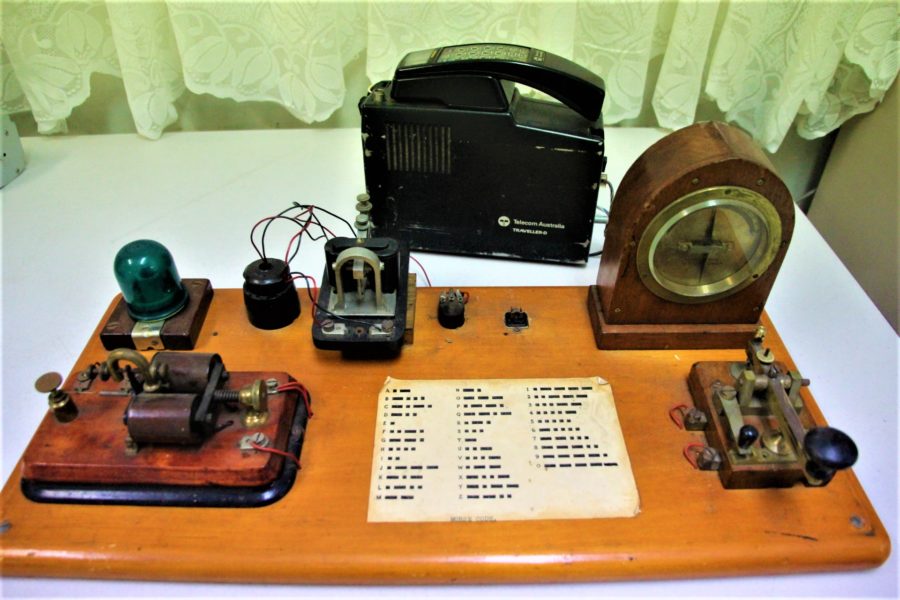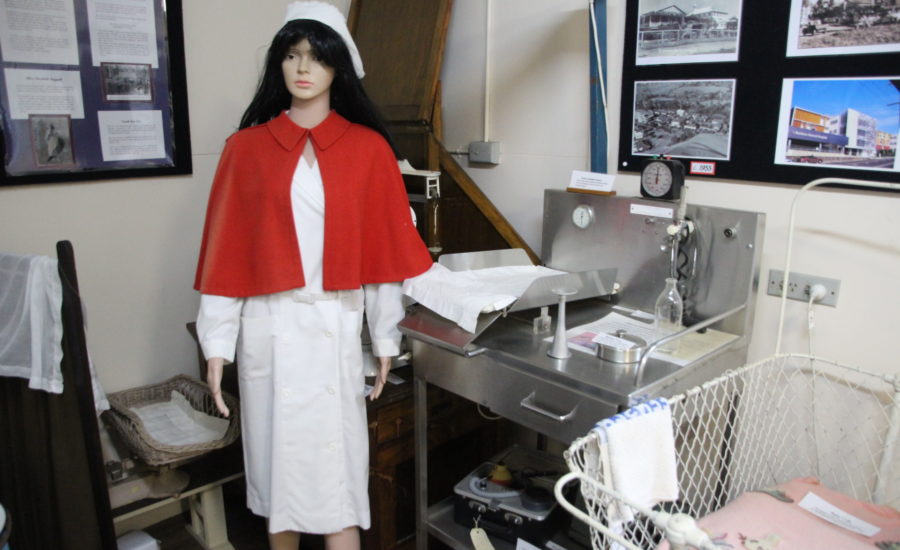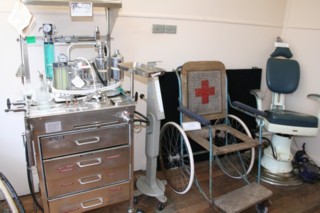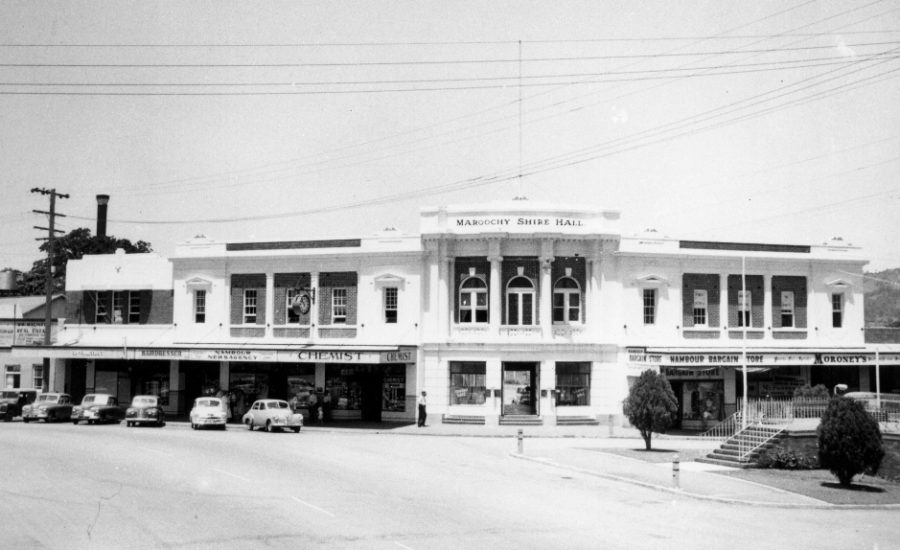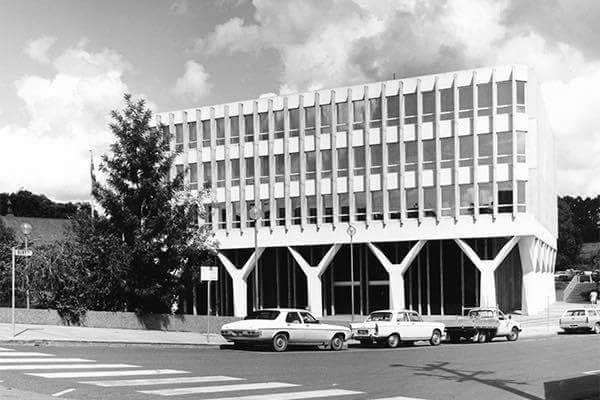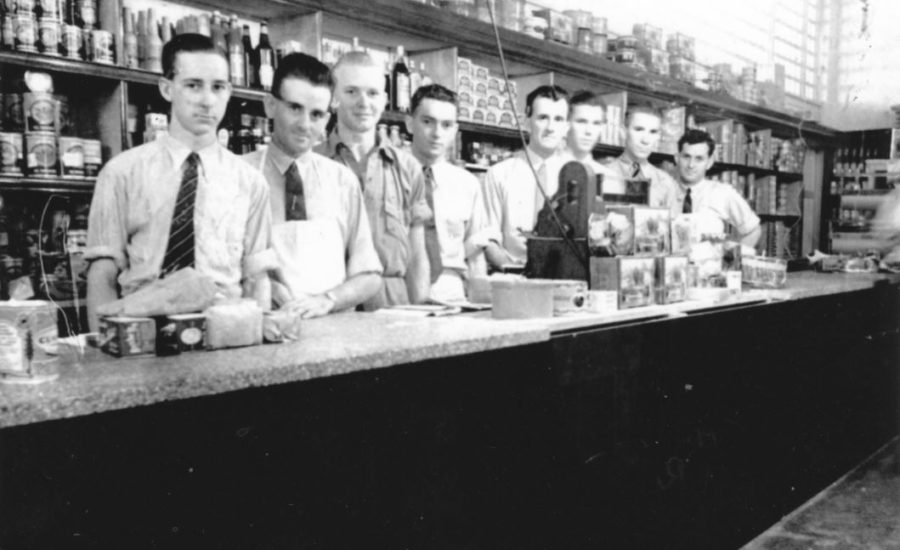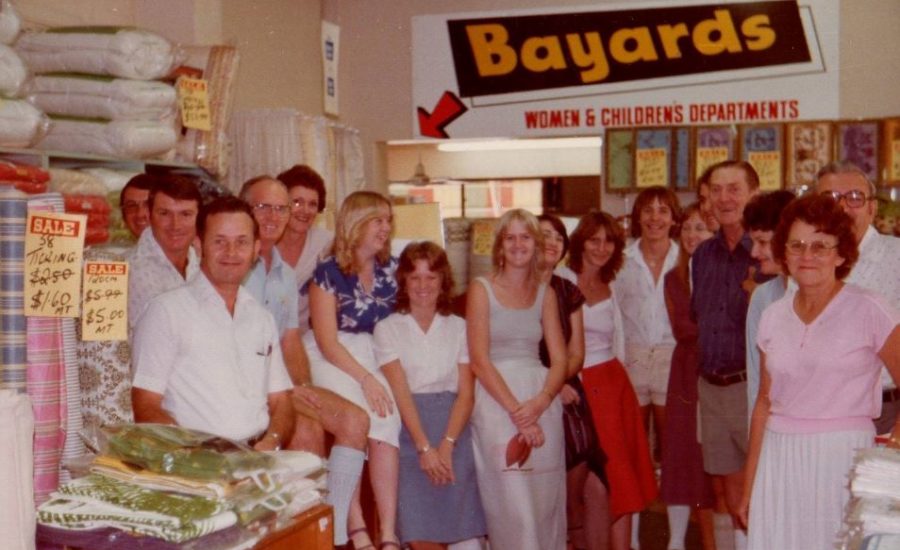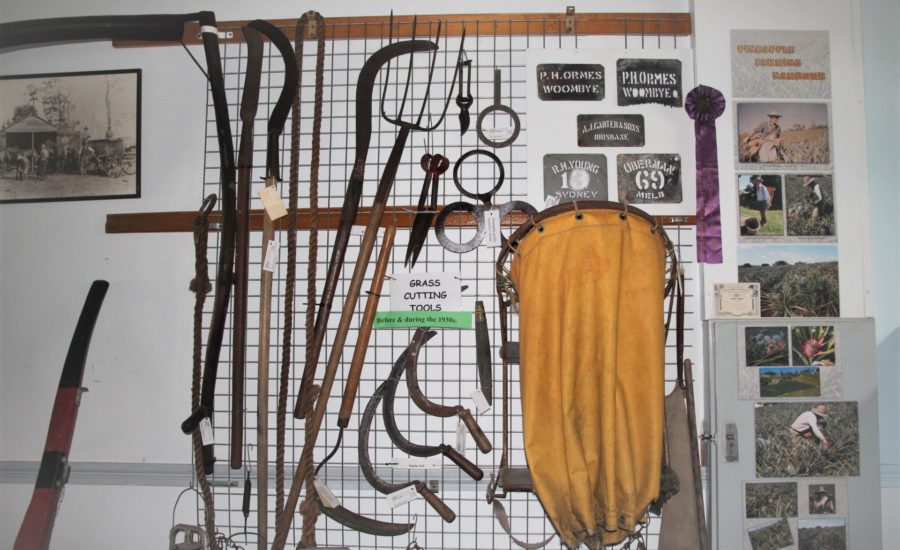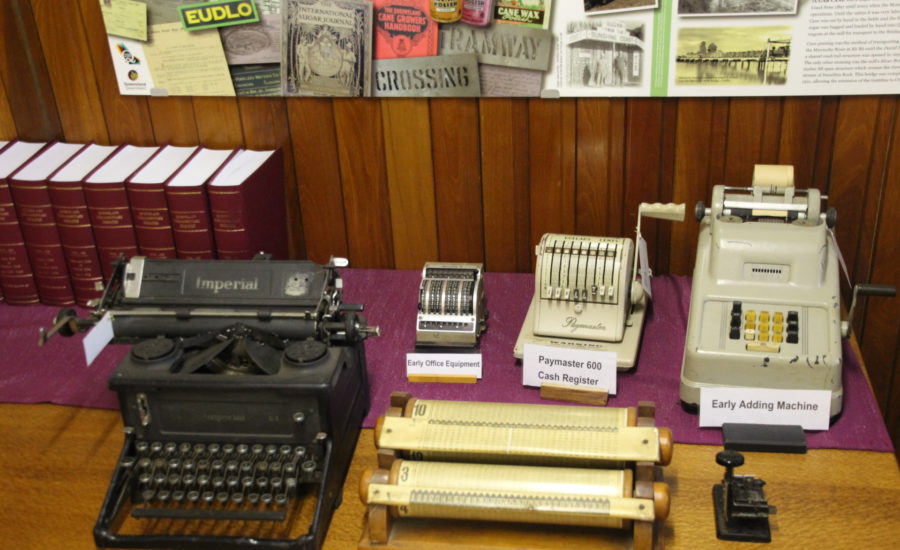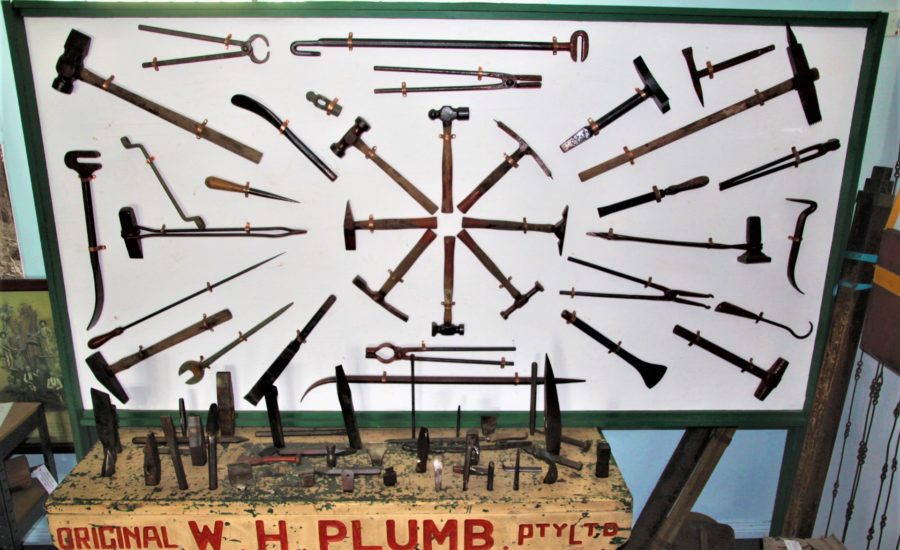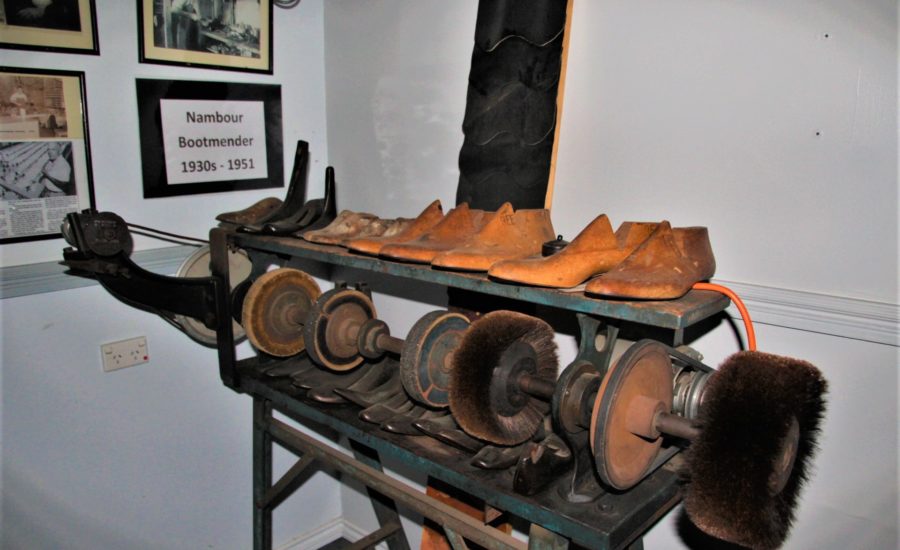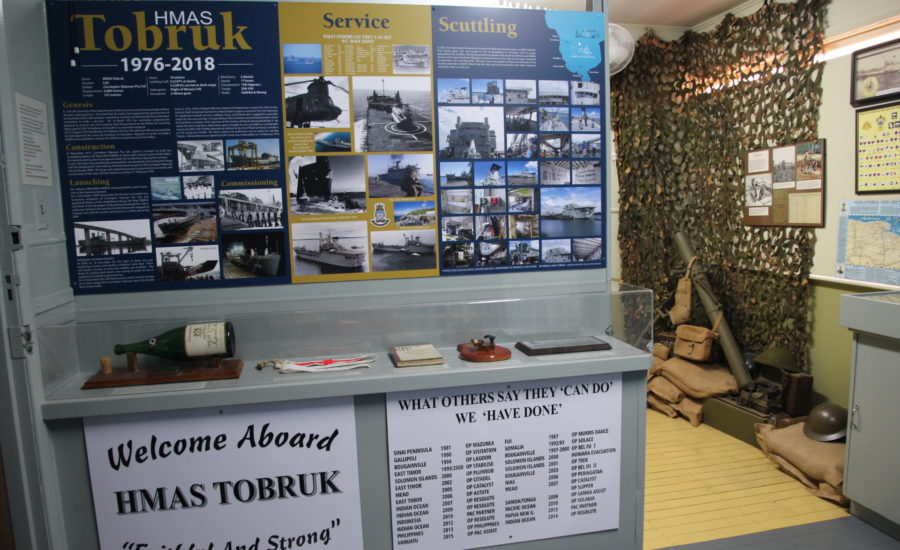
Look Inside
The Museum is not as small as most passers-by think. We have room downstairs and outside for several mighty locos from the sugar cane farming days. Come along and check out the amazing Moreton Mill rolling stock together with the Engineer’s Office and you’ll be on track for a great trip down memory lane.
Around the Home
Kitchen
The Kitchen Room houses an extensive collection of items found in and around the kitchen in the first half of last century. From fine china and tableware, storage containers and cooking utensils to the butter churn, this collection will bring back many memories of the early years, either growing up as a child or raising a family before the advent of the takeaway dinner.
Laundry
The Laundry Room contains a wide range of items found in that area of the home which everyone tried to avoid, except Mum of course who had no choice. Forget the automatic washing machine and the lightweight electric iron for a moment. Check out how the washing was done by hand and with the wringer and then cast your mind back to those heavy irons, the days of the clothes prop and revisit some of those washing and cleaning agents used around the home.
Parlour
The Parlour features an impressive collection of dresses, haberdashery and trinkets which were commonplace in earlier life and around Nambour homes. While the gentlemen were often found out in the field relying on horsepower to get their jobs done, the ladies relied on needles plus treadle power to keep their Singer sewing machines humming along as they produced much of the family clothing.
Growing Up
Early Childhood
Children today are raised and educated with toys and learning aids which are very much technically, mechanically or computer based. Previous generations tended to stick to the tried and tested forms of childhood learning and amusement activities because “times were tough” after the world wars and society generally was less affluent than it is today. Take a look at the collection of childhood memorabilia from those early days.
School
The School Room contains an interesting range of teaching aids, school uniforms, reports and project material which was commonplace in the schools around Nambour during the early to mid- period of last century. Come along and reflect on the days of the dreaded cane, writing slates, uncomfortable desks and forms plus the occasional good clean fun or mischief as it was termed in those days. The Nambour district comprised many small State Schools and the innovative for its time, Rural School.
Scouting
The Scouting Display is a must see for anyone who has ever been associated with the Scouting movement. The display has been assembled and maintained by die hard enthusiasts who remain actively involved in the movement. Intense focus on two major events, the Cub Scouts’ 90th Anniversary and 100 years of Scouting, have culminated in a truly excellent feature display containing remarkable scouting memorabilia.
Leisurely Pursuits
Embroidery
The Embroidery Exhibit is rated as one the most impressive collections of its type in smaller museums. This collection featured prominently with rave reviews in the Channel 9 program “Extra” during its coverage of the Nambour Museum in 2006. The extensive range of fine and delicate needle work from local residents will impress everyone.
Matchcraft
The World of Matchcraft display is a private collection which was produced by Ken Underhill as a hobby during his adult years and donated to the Museum. With a distinct nautical theme, Ken’s painstaking work in producing replicas of the sailing ship “Mary Rose” and more modern navy ships and towering bridges with match sticks and glue is truly stunning.
Commercial Hub
Hub of the Hinterland
Nambour is promoted as the “Hub of the Hinterland” and it certainly was the heart of business and commerce for the Sunshine Coast until recent years. Farming provided most of the initial employment options around the district and the establishment of the Moreton Central Sugar Mill in 1893 provided the major catalyst for growth, expansion and work opportunities.
The town of Nambour is long remembered for its sugar mill, the characteristic odours which wafted around town, the puffs of black smoke which emitted from the giant chimney stack and the fallout from cane ash which followed the evening cane fires. But who could forget the sight and sounds of those mighty little engines pulling countless wagons of cane up along Howard Street and then across the town’s main (Currie) street into the mill.

The Nambour Museum being strategically located next to the former Moreton Sugar Mill has successfully accumulated a most impressive collection of locomotives, machinery, tools, furniture, photographs and records to ensure that the contributions made by farmers, mill workers and the industry generally to the local economy are well documented.
The 1960s era Moreton Sugar Mill Board Room has been replicated in the Museum building using timbers and materials from the original board room. This area contains the Board Room table, trophies and photographs as well as scale drawings of the mill and replicates the atmosphere of times past.
The lower level of the main building features an amazing collection from the Moreton Sugar Mill Workshop with large machines, lathes and the tools used on site for everyday maintenance of plant, machinery and rolling stock.

Also on site at the Bury Street end of the property is the original Moreton Mill Engineer’s Office. This eye catching historic building warrants close inspection inside for the important role it played in the milling operations.
Together with the railway control system and the tracks, the historic locomotives Eudlo and Shay together with other rolling stock appear well at home here. The Loco Shed near the rear entrance enhances this memorial to the local sugar industry with steam engine Eudlo on track and the flywheel and the tippler which were used for the unloading of cane from the bins in place. Caged directly opposite are two other Moreton Mill workhorses, Bli Bli and Valdora.
Telecommunications
Nambour was the first town on the North Coast between Brisbane and Gympie to have a telephone service connected, way back in 1908, and the town was renowned as a major technical, switching and administrative centre for about 90 years. The Telecom/PMG Room has been outfitted with a cross section of equipment used for telephone and telegraph communication over the past 100 years.
Tele/communication was something that everyone in the community had in common with a progression from telegrams and magneto telephones to telex machines and automatic dial telephones. The advancement in technology through optical fibre and satellite transmission, computers and mobile phones since then has been truly amazing.
The last party line telephone was removed from service in the local area some 40 years ago. Come along and see how a call was once connected by the local operator who has also become redundant with automation. Check out the changes to handsets and take a look at one of the first mobile phones.
Hospital
The Nambour Hospital remains one of the major hospitals in Queensland and is quite a massive complex compared with the facilities which once served the entire North Coast region. From childbirth to aches, breaks and dental care, the old Hospital Room which houses equipment mostly donated by the Nambour Hospital is certain to conjure images and memories of a painful trip to the doctor or dentist. Compare some of the spine tingling surgical tools and ward equipment of yesterday when compared with today’s modern health care facilities.
Shire Council
Local Government has played a significant role in Nambour’s evolution over the years. The Maroochy Divisional Board began in 1890 and was superceded in 1903 by the Maroochy Shire Council. Ten years later the town celebrated the opening of its first Town Hall. A number of fires subsequently culminated in new Council Chambers being built in 1960 before regional growth forced the need for larger premises with the present building opening on October 12, 1978.
The Nambour Museum holds many interesting artefacts and heritage materials relating to the town’s development and local government from years gone by. Standing proudly and tall at both front and rear entrances to the Museum today are old Town Hall Clocks. They serve as a constant reminder of shopping and working down town in bygone days.
Small Business
While larger enterprises like the Moreton Sugar Mill, Telecommunications, Council, Hospital and Education facilities provided enormous employment opportunities and prosperity, Nambour relied heavily on small businesses for the delivery of everyday services.
The history of many of the better known small and larger businesses which have operated in town over the past century is documented. The Museum is able to provide a snapshot of commercial activities throughout the various eras from the information on hand, the great collection of historical photographs and The Nambour Chronicle.
Office Machinery and Hand Tools
While much has been lost through floods, fires, closures and redevelopments over the years, a wide range of objects, signs, office machines and tools is displayed as a timely reminder of those early business and employment links. For instance, the entire collection of tools from Potter’s Bootmaking is on permanent display. Hand tools used on local pineapple and cane farms and for timber getting are stark reminders of the heavy physical labour involved in many jobs outside Currie Street.
Military Memories
Remembrance
The Nambour Museum is privileged and honoured to present an amazing cross section of memories from all major international conflicts over the past century during which many local people played a significant role and often made the supreme sacrifice.
Tobruk
This is the Museum’s newest permanent display opened in June 2019 highlighting the connection between the Rats of Tobruk and HMAS Tobruk. The display features parade banners and memorabillia from the Australian 9th Division Association, Rats of Tobruk Association and the 2/15th Battalion Remembrance Club. The 2/15th Battalion was raised in Brisbane in 1940 and including many young men from the Nambour district.
In 1941 the soldiers of the 9th Division which included the 2/15th Battalion became known as the Rats of Tobruk for their stance against the Afrika Corps in holding the Libyan port of Tobruk during the Siege of Tobruk. During the siege the troops were kept supplied predominantly by the Australian Navy. When the Australian Navy launched its first heavy lift ship in 1980, crewed by sailors but also carrying a compliment of soldiers, it was fitting that the ship be named HMAS Tobruk. As the ‘Rats’ never received the recognition they deserved in the way of medals, they took great pride in having this ship named in their honour and a long association with the ship ensued.
HMAS Tobruk was scuttled as a dive wreck in Hervey Bay in June 2018. Nambour Museum received memorabillia removed from HMAS Tobruk prior to the scuttling including sections of flight deck railings and telephones. The display also features numerous unique items such as HMAS Tobruk’s Commissioning Pennant.
Other Collections
The main display room contains a treasure trove of interesting collections including the Big Pineapple, cameras, men’s and ladies’ toiletries, souvenirs, trophies, religious artefacts and musical instruments. Artefacts from the New Hebrides incorporating Vanuatu are also on public display. Following is an indicative list of material most of which has been developed through research by museum volunteers and is accessible upon request.
- History of Sport in Nambour and District
- Nambour Show
- Pioneering Women
- Business Houses
- Early Settlers and Their Families
- Beacons of Faith
- Nambour Schools
- Druids
- Girl Guides
Reference Materials
Library
The Nambour Museum has an extensive collection of publications, reference materials and documents pertaining to the local area. Visitors are welcome to inspect the library and conduct personal research during office hours for a nominal sum. Photocopying facilities are also available (fees apply).
Family Histories
The research library would be incomplete without a number of interesting family histories relating to both pioneering families and those who have come along in more recent years to make a significant contribution to the local community.
Photographs
A marvellous range of black and white photographs taken around the turn of the twentieth century plus others from the Great Depression era provide a thought provoking insight into the early days of Nambour. These and others from a wide range of collections are accessible for public viewing.
Videos
The video collection includes formal documentaries on the sugar industry, the Moreton Mill and various aspects of our telegraphic and telephonic history. Using old photographs, the Museum has also developed several interesting and informative slideshow presentations which relate specifically to local people and the local area. All videos are available for viewing on site but are not for sale.
Publications for Sale
The keen interest of local historians is reflected in a wide range of publications produced to either commemorate special events or to satisfy curiosity about surrounding local features. These publications may be inspected at the Museum and most are usually available for purchase. If interested, click Publications for the latest information.
Other Heritage Links
For those eager to conduct private heritage research into local families, businesses and lifestyles, a summary of websites which might prove useful is available. The document also includes reference to other community organisations offering a broad range of information about current events and activities in and around Nambour including the broader Sunshine Coast. Refer to Links for more information.
